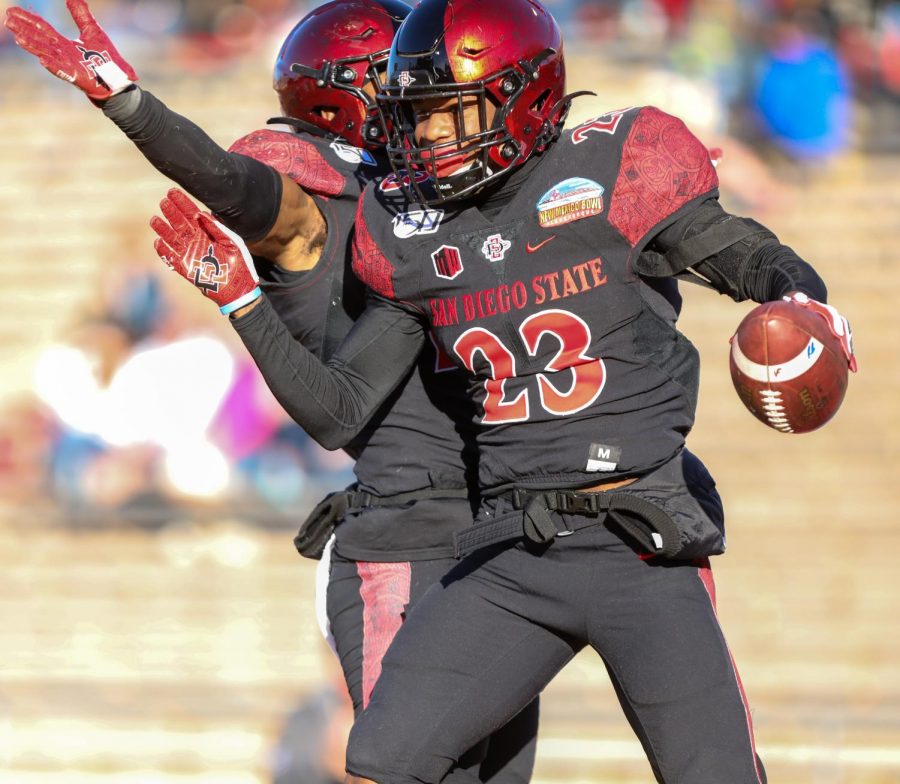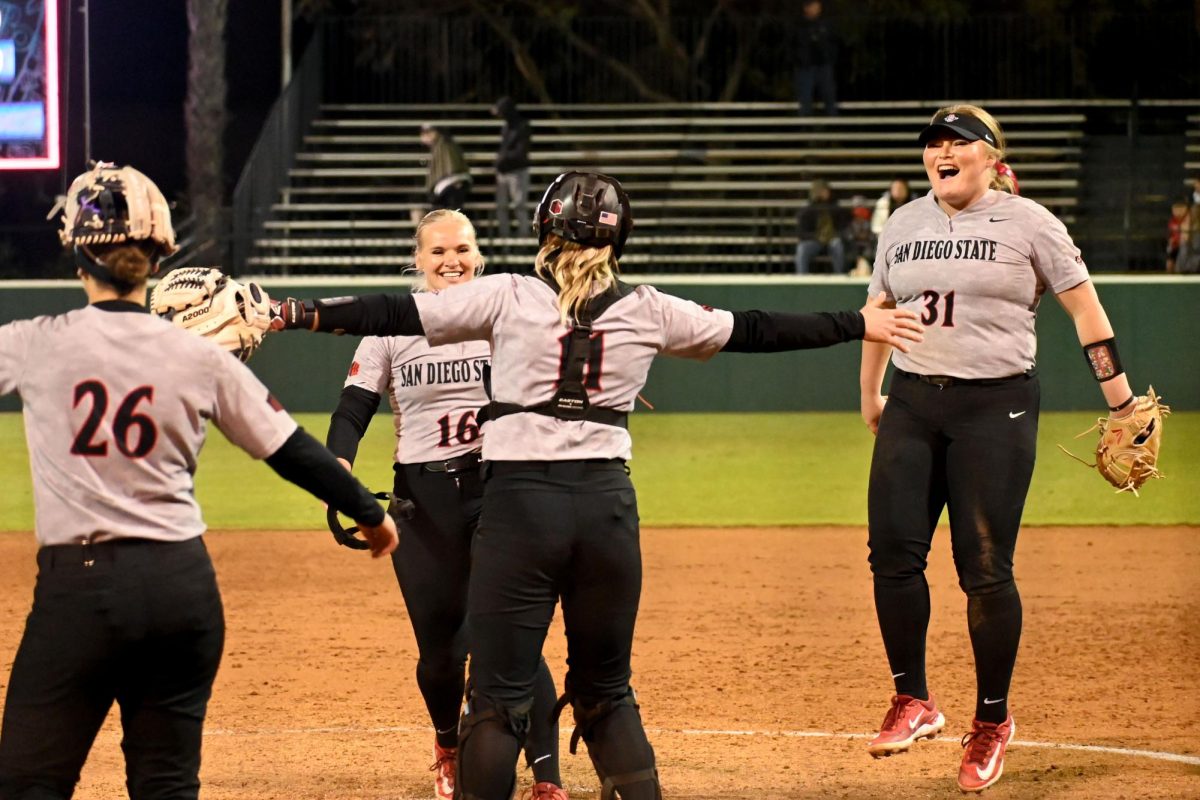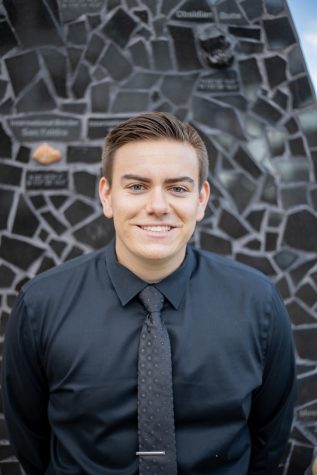After months of uncertainty due to COVID-19, the Mountain West Conference postponing fall sports in early August and the initial decision to play next spring, some thought San Diego State football wouldn’t have a season at all.
But now, that’s in the past. Football is back.
SDSU’s season opener is set for Oct. 24 against UNLV at the team’s temporary new “home” in Dignity Health Sports Park in Carson, Calif.
Facing the Runnin’ Rebels probably won’t be all butterflies and flowers, though.
UNLV bolstered its roster this offseason after hauling in key additions, including a brand-new coaching staff.
The Runnin’ Rebels moved on from head coach Tony Sanchez last November. In his five years at the helm, he amassed a 20-40 record.
To replace him, UNLV brought in former Oregon assistant head coach and offensive coordinator Marcus Arroyo.
Last season at Oregon, Arroyo won the Pac-12 Conference championship and Rose Bowl. While also serving as the Ducks’ quarterbacks coach, he played a substantial role in developing top-10 NFL Draft selection and Los Angeles Chargers starting quarterback Justin Herbert.
SDSU senior defensive back Tariq Thompson said with the addition of Arroyo, he expects UNLV to spread the field on offense.
“For me, as a defender, I know that coach Arroyo is a great offensive mind,” Thompson said. “We’re expecting to have a spread-out game. A lot of talent on the perimeter, getting the ball out fast and trying to make big plays, so our job is to stop that.”
Shortly after Arroyo put pen to paper, UNLV hired Peter Hansen as the team’s defensive coordinator. Most recently serving as Stanford’s inside linebackers coach for the past six seasons, Hansen once coached in a Super Bowl as a defensive assistant with the San Francisco 49ers.
Arroyo was also able to bring in Glenn Thomas to become the team’s offensive coordinator and quarterbacks coach in April. Thomas has over 20 years of coaching experience and recently worked with current Carolina Panthers head coach Matt Rhule at Baylor from 2017-19.
SDSU head coach Brady Hoke said considering UNLV’s new hires, he expects the Runnin’ Rebels to include aspects of both Oregon and Stanford’s playbooks.
“You’re assuming it’s going to be Oregon’s offense, Stanford’s defense because of the hires and the coordinators,” Hoke said. “So that’s been a lot of it, trying to get our guys and (Oct. 15) was the first day that we really started on UNLV, but get them accustomed to what they do.”
The Aztecs, on the other hand, also have a brand new coaching staff in place, with Hoke at the helm for the second time in his career.
Offensive coordinator Jeff Hecklinski and defensive coordinator Kurt Mattix were brought in during the offseason to replace former OC Jeff Horton (current SDSU associate head coach) and DC Zach Arnett (current defensive coordinator at Mississippi State).
Hoke said a goal of the Hecklinski-led offense is to score more points in 2020.
“Well, there’s no doubt we have a lot of confidence in what we’re doing on offense,” Hoke said. “I think the players do, I think (Hecklinski) and the offensive staff have done a really good job on a pandemic-kind of year, getting the things that we think can help us be successful installed and in place and ready for game one.”
However, a new playbook also presents new challenges.
SDSU offensive tackle Kyle Spalding said learning new communication methods has been the biggest adjustment for the offensive line.
“Definitely keeping up with the new terminology,” Spalding said. “We’re not changing a whole lot, but new words, new communication and making sure that we’re communicating the most on the field is most important to our position.”
On the other side of the ball, the playbook and 3-3-5 defense remains.
Thompson said SDSU’s defense hasn’t changed much despite the change at defensive coordinator.
“It is the same defense but, I mean, I feel like coach Mattix does a great job calling plays,” Thompson said. “He’s implemented a little bit of new stuff, but it’s definitely the same old defense we’ve been playing it for, I want to say, the last 10 years, and it’s just a great feeling playing in it.”
The Aztecs’ defense could potentially start their season facing TCU transfer sophomore quarterback Justin Rogers. He’s one of three quarterbacks vying for the UNLV starting spot under center.
Rogers was the highest-rated recruit in TCU history before transferring to UNLV earlier this year. As a senior in high school, he was ranked the No. 3 dual-threat quarterback and 43th-best player in the country, according to 247 Sports.
Sophomore Kenyon Oblad is another quarterback who enters the year hoping to keep his starting spot. Last season, he threw for 2,081 yards with 18 touchdowns and nine interceptions.
Oblad is poised to start based on his previous experience as the starter, but Rogers could give Oblad a run for his money.
No matter who starts at quarterback, UNLV will heavily rely on senior running back Charles Williams, who looks to be the focal point of the offense yet again.
The Doak Walker Award and Maxwell Award watch list nominee ranked second in the conference in rushing last season with 1,257 yards and 11 touchdowns — all while averaging just under six yards per carry.
In the Runnin’ Rebels’ 20-17 loss to the Aztecs last October, Williams finished with 113 yards on 19 carries. That was the most rushing yards SDSU conceded to a single player all season.
SDSU’s defense will aim to keep Williams in check this time around. The Aztecs were ranked second rushing defense in the nation last season, allowing just 2.8 yards per rush.
Last season, the Aztecs were also second in the country — just behind Georgia — in points allowed per game (12.7). Defense should continue to be a strong point for the Aztecs this season, as they hope to build upon their resume.















